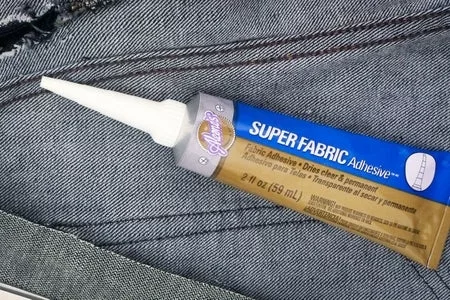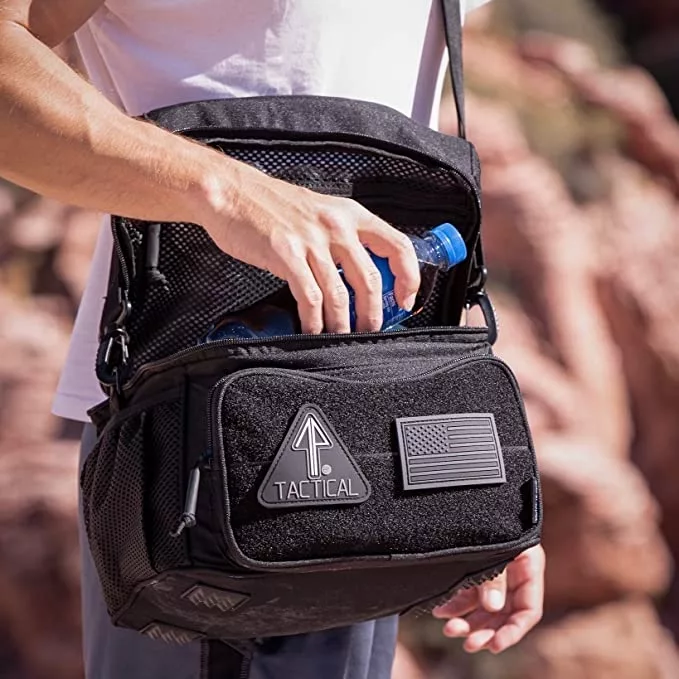How to Attach Patches without sewing
by Karen Jones
Patches are great for several reasons. They are small in size and can share a truckload of intricate information about the person wearing them on their cloth. People even see it as an easy fix to cover torn areas of their favorite clothes!
The good thing is that you don't need to know how to sew. Yes, you can attach any patch you want to your clothes without sewing them. In this post, we will discuss how you can seamlessly attach patches to clothes. With these methods, you can get your kids rocking their boy scout patches in no time!
Before you dive into the main body of this post, you need to know some of the materials and tools you need to attach a patch to your clothes.
Contents
Things to consider when attaching a patch to your cloth

1. Tools needed to attach a patch to your cloth without sewing
· Iron
Depending on the type of patch, you need an iron. There is hardly any household that does not have one. So, you don't have to spend too much money on expensive iron. Your regular iron will do well enough!
· Patches
Of course, you also need patches. It doesn't always have to be patches given to you by a body you work for or work under. You can always buy them at your local supermarket. They are also on sale in many online stores.
· Glue
Since you won't be sewing, you need to use glue to make sure your patch is in place. Ensure you buy glue of high quality so that you don't end up leaving stains and spots on the edges of the area you attached the patch. Also, ensure you use non-toxic glue especially if you are attaching a patch to your kid's cloth.
Please note that not all glue on the market is designed for use on clothes. Some would eat deep into the clothes you put them on. Hence, do some research before picking one.
2. Patch build quality and make
If there is something we can all agree on, it's that patches are not all the same. Each comes with its unique build quality and make. While some are easy on the eyes, some are overtly made to distract people when they look at your jacket or jean trousers. So, you should carefully consider the type of patch you are using.
3. What type of material is the patch made of?
Before you buy a patch or attach one to your cloth, you need to have a good idea of the type of fabric the patch is made of. This can greatly help you when deciding the type of cloth to attach it to.
Some common fabric types that patches are made of include cotton, denim, nylon, polyester, silk, etc.
4. Choose the perfect Design
The size of patch you decide to attach to your cloth can make or break it. As a result, it is not something you want to do with haste.
First, you need to think about the information the patch is sending out. Another important thing to note is the color of the patch. Once you have a good understanding of these two things, you are good to go.
You don't necessarily have to choose the biggest patch to make your jacket eye-catching and appealing.
TIP: The best patches are always the small to medium-sized patches that attract attention but aren't entirely distracting. In other words, they should still be big enough for anyone looking at them to understand the information they carry.
5. Where to place the patch
To be honest, you can put your patch anywhere you want on your dress or jacket. However, there are some places on a cloth or jacket that quickly draws one's attention.
They include:
- Shoulder region
- Chest region
- Back of a jacket/Shirt
- Midway down on the front of a jacket
How to attach a patch without sewing it?
Attaching patches without sewing isn't as difficult as you might think it is. And to be quite honest, being able to attach a patch without sewing makes the whole procedure fast and easy. Because let's face it, not all of us can sew!
So if you have children in the scouts looking to add their scout badge/patch to their uniform or you are looking to add a custom patch of your own to your jacket, we got you covered.
Add Patch with glue

Glue is the best option if you don't want to sew the patches on. The only drawback is you can't use any type of glue. You need to invest in high-quality, non-toxic glue so that the patch can last for as long as possible. Here's how to glue patches to your clothes:
- Step 1: First, decide where you want the patch to be on the cloth. If you're not sure where to put the patch, you can't ever go wrong by placing it on the chest region. Of course, it is for your kid's scout uniform, you might want to get more info on where to place it from your kid or a ranking officer in your kid's scout. The main reason for this hassle is because you are using glue. Unlike sewing which you can easily remove, it is very difficult to remove glued patches. So, do yourself a favor and consider this first step as much as you can.
- Step 2: Place the cloth on a flat surface. For instance, a table, an ironing board, etc.
- Step 3: Carefully apply the glue first to the patch and then to the area of the cloth you want to place it on.
- Step 4: Wait a couple of minutes. Preferably between 2 to 5 minutes.
- Step 5: Next, place the patch on the cloth or jacket (the area you applied glue to). Press firmly
- Step 6: Leave for 24 hours then wash the cloth, jacket, or uniform. After which it can be worn.
Iron-on the patch

Ironing is another easy way to add patches to your clothing without sewing. If you want the patch to be where it is even after continuous use and washing, you need to properly iron it in. This step is only viable for patches that come with an adhesive side.
NOTE: Before ironing, you need to check the type of fabric the jacket or uniform is made of. This would help give you an idea of how much you need to heat your iron up.
The general rule is to avoid using this method for clothes made of polyester, silk, or other delicate materials. This is because they can easily burn or become discolored if too much heat is applied. Below are the steps involved in ironing on patches:
Step 1: Place the cloth on an ironing board or any table you use whenever you want to iron your cloth.
Step 2: Keep the fixes careful wherever you want. The bonding side of the patch should be placed on the substance.
Step 3: Plug your iron and allow it to heat up. Set the iron to the hottest settings your fabric can handle.
NOTE: Turn off the steam option of your iron or simply make sure there is no water in the compartment for it.
Step 4: Place a towel over the patch and the surrounding area of the jacket or uniform you want to iron the patch on. This not only protects the fabric but also ensures the position of the patch doesn't change at all during the entire ironing process.
Step 5: Press the iron on the towel over the patch and hold it in position for about 20 to 30 seconds while applying as much pressure as you can. While doing that, ensure you keep your hands stable to avoid the patch being misaligned.
Step 6: Leave the patch and cloth to cool. Next, inspect the patch to see if it is properly fixed to the cloth. If the edges lift, you have to redo the whole process again.
Attach Velcro patches without sewing

We all know how incredibly useful velcro is. But how do you attach them to a piece of clothing without sewing?
The answer is glue or any other adhesive specially designed for use on Velcro materials. Fabric-based tapes would also work but they are not readily available like glue.
There aren't any special steps involved when it comes to gluing Velcro patches to the fabric. All you have to do is follow the steps outlined above in the use of glue and you should be good. The same procedure also works for any other velcro adhesive.
Final Word on Attaching Patches without Sewing

Sewing is fun, but not everyone can do it. Hopefully, with the methods discussed above, we are sure you can now attach patches to your cloth whenever you feel like it!
There are various types available on online stores that also let you attach patches without much hassle. Of course, it takes more time since you have to order them and wait for their delivery. That said, attaching patches without sewing isn't really as difficult as you might think! That is of course if you follow all the necessary precautions to protect your cloth while adding the patch.
 |  |  |  |

About Karen Jones
Karen Jones has always been a writer at heart. As a freelance writer and social media marketing consultant for the last decade, she's honed her skills in crafting catchy and interesting articles that reel in readers. She also enjoys traveling, which is where she gets most of her ideas for her writing. In fact, if you can't find Karen around her friends and family, it's likely because she's holed up in her home office working on refining her writing composition and printing press!
Thoughts on "How to Attach Patches without sewing"
 |  |  |  |
Get some FREE Gifts. Or latest free printing books here.
Disable Ad block to reveal all the secret. Once done, hit a button below
 |  |  |  |